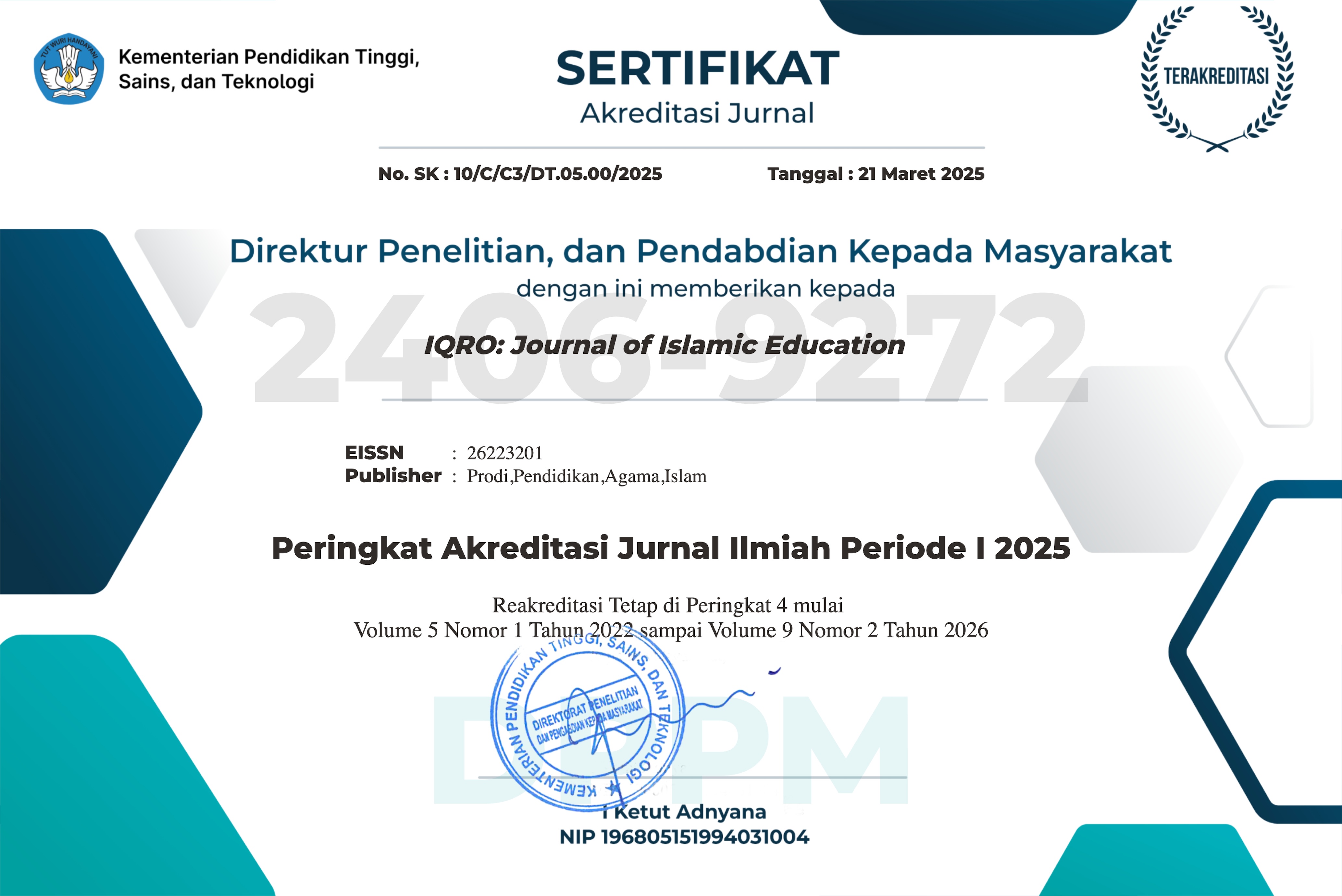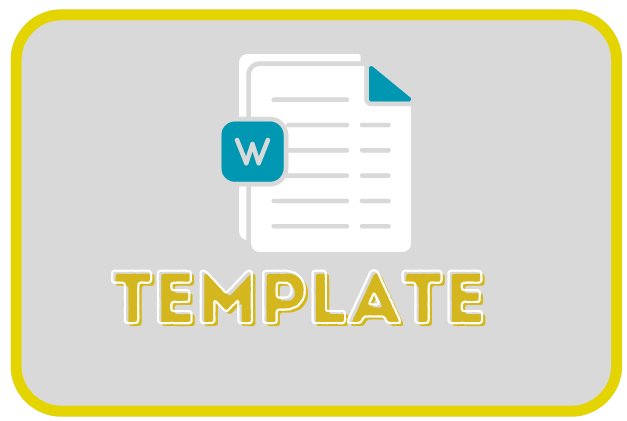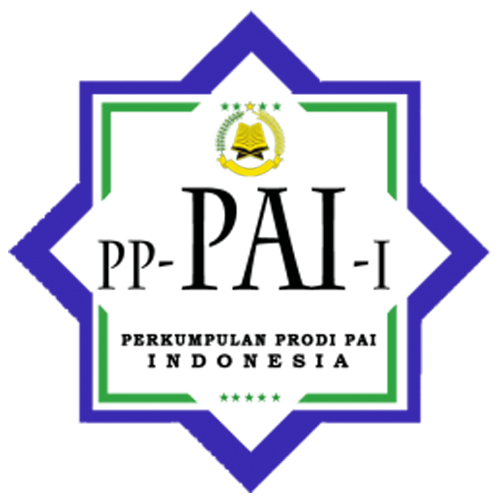Pengaruh Metode Pendidikan al-Qur’an Orang Dewasa terhadap Kemampuan Membaca al-Qur’an
DOI:
https://doi.org/10.24256/iqro.v1i1.309Keywords:
Method of Al-Qur'an Education, Adults, Ability, Reading Al-Qur'an, Metode Pendidikan Al-Qur’an, Orang Dewasa, Kemampuan, Membaca Al-Qur’anAbstract
References
Ash-Shabuni, Muhammad Ali, At-Tibyaan Fii Uluumil Quran, diterjemahkan oleh Aminuddin dengan judul Studi Ilmu al-Qur’an. Bandung: CV Pustaka Setia, 1999.
Badan Pengembangan dan Pembinaan Bahasa Kementrian Pendidikan Kebudayaan, Kamus Bahasa Indonesia untuk Pelajar, Cet.I; 2011.
Departemen Agama RI, Al-Qur’an dan Terjemahannya, Cipinang Muara: CV. Darus Sunnah. 2002.
Fauziah, Peningkatan Kemampuan Membaca al-Qur’an Secara Tartil Sesuai dengan Ilmu Tajwid Bagi Siswa Kelas IV MI al-Islam Lesanpuro Kecamatan Kajoran Kabupaten Magelang. Skripsi. STAIN Salatiga, 2011
Islamiyah, Wahdah, Belajar Membaca Al-Qur’an dari Nol dengan Metode DIROSA, Situs Resmi Wahdah. http://wahdah.or.id/belajar-membaca-alquran-dari-nol-dengan-metode-dirosa/ (18 Desember 2015).
Komari dan Sunarsih, Panduan Belajar Baca al-Qur’an Sistem Klasikal 20 Pertemuan DIROSA”, (Cet. XIX; Lembaga Pembinaan dan Pengembangan Pendidikan al-Qur’an (LP3Q) Dewan Pimpinan Pusat Wahdah Islamiyah, 2013.
Malik, Halim. Teori Belajar Andragogi dan Penerapanny, Situs Resmi Kompasiana.com. http://kompasiana.com (14 Juni 2017).
Moh. Chaddziq Charisma, Tiga Aspek Kemukjizatan al-Qur’an. Surabaya: PT Bina Ilmu, 1991.
Naisaburi, Abu Husain Muslim bin Hajjaj Alqusyairi an. Kitab Shahih Muslim Shalatnya Musafir dan Penjelasan tentang Qashar Juz 1. Bairut-Libanon: Darul Fikri, 1993.
Naisaburi, Imam Abi Husein Muslim Ibnu Hajjaj Alqusyairi an, Shahih Muslim Juz I , diterjemahkan oleh Adib Bisri Mustofa dengan Judul Terjamah Shahih Muslim Jilid I. Semarang: CV Asy-Syifa’, 1992.
Poerwaedarminto, Kamus Umum Bahasa Indonesia. Jakarta: Balai Pustaka, 1987.
Surahman ,Otong, Metode Insan Kunci Praktis Membaca al-Qur’an baik dan benar. Cet. II; Jakarta: Gema Insani Press, 2002.






 This is an open access article under the
This is an open access article under the 